Components
The detexline system consists of:
Advanced mechanical detectors
The detector consists of a glass ampoule, with the glass cracking at a predetermined temperature.
The internal argon container of the detector is triggered, causing the gas pressure in the pipe to the control unit to rise immediately. This triggers the control unit at the extinguishing agent container, and the extinguishing process is initiated immediately. The system has a response time (RTI) of 12, which is considered ultra-fast. (By comparison, rapid building sprinklers have an RTI of 50).
The mechanical detection and triggering system means that there is no risk of false alarms or fault signals due to electrical faults, loss of pressure (which can occur with pressurised fire extinguishers) or similar – the system can only be triggered in the event of the high temperatures capable of cracking the glass in the detectors.
Wide range of detectors ensures tailored protection for different areas of the engine compartment
The engine compartment of a large vehicle is not uniform in terms of the temperatures that occur when the vehicle is in operation. The acceptable temperature around the exhaust is significantly higher than that accepted by some of the electrical components. The detexline system therefore allows the use of detectors with different temperature sensitivity depending on where they will be situated in the engine compartment.
The available detectors start at a temperature of 68 degrees and are then available for 110, 141, 182 and 260 degrees. The detector in each area is selected so that the triggering temperature is at least 30 degrees above the expected operating temperature of the area.
This makes it possible to put together a fire extinguishing system tailored to the individual engine it will be used in – thereby providing optimal protection.
If desired, a manual activation button can also be connected with the same fast response time from system activation to the start of extinguishing.
In our solutions for buses, the system is preconfigured for the engine types and engine compartments used in Danish buses today.

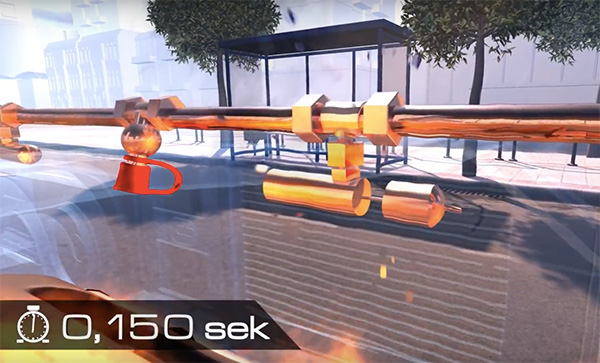
Alarm for driver
When a detector is triggered, an alarm signal is immediately sent to the driver (light and/or sound alarm) to warn them to stop and evacuate the vehicle.
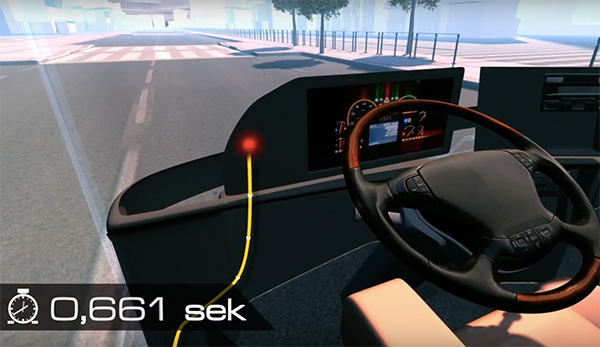
Extinguishing pipe
The detexline system stands out from the rest by combining fire detection and extinguishing in one pipe to optimise reaction time and thus extinguishing speed (hence the name detexline, which combines the words ‘detection’, ‘extinguishing’ and ‘line’).
This also saves a large amount of materials and makes installation significantly easier, thereby also reducing the costs of purchasing and installing the system. The pipe is also made of stainless steel, which extends the life of the system, as there is no risk of corrosion.
Extinguishing agent container
The extinguishing agent container is made of stainless steel and is not under pressure until the system is triggered.
A control unit inside the tank is triggered by pressure when a fire is detected. This control unit consists of a trigger and a nitrogen gas cartridge which, when actuated, inflates a balloon inside the tank. The balloon is filled from the bottom, forcing the extinguishing agent out through the pipe to the extinguishing nozzles.
The extinguishing agent is selected according to the vehicle, weather conditions and environment in which it will be used. It is possible to use extinguishing agents that work in geographical areas with temperatures from -30 degrees to 80 degrees. When the system is installed in a bus, the environmentally friendly extinguishing agent MOUSSEAL CF is used, but it is also possible to use water, CO2, argon, FM 2000 or fire extinguishing powder as extinguishing agent.
The tanks come in two sizes: 14 litres (size most commonly used) and a larger one at 24 litres.
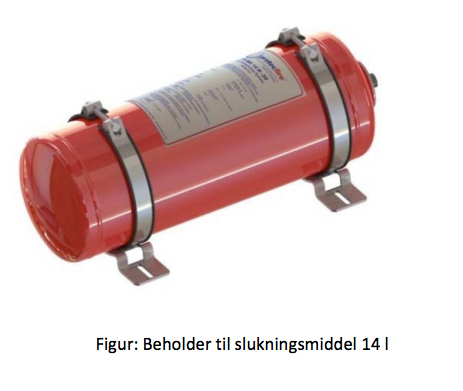
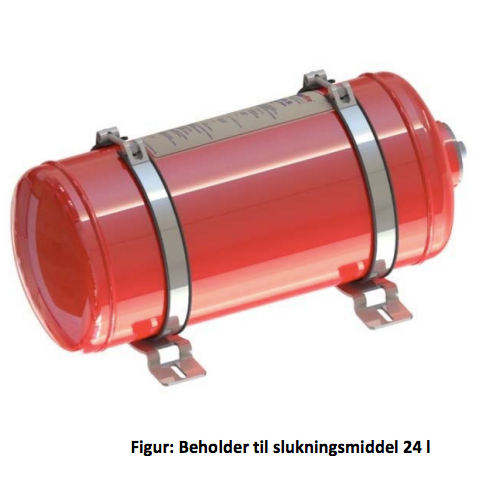
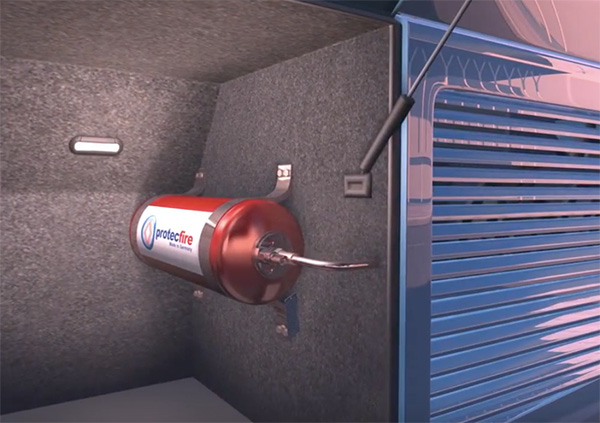
Specially designed directional extinguishing nozzles
One of the core elements of the detexline system’s ultra-fast fire extinguishing is the specially developed nozzles, which make extinguishing efficient and targeted via two properties:
1) Spherical socket enables directional extinguishing
The nozzles have a spherical socket that allows them to be pointed directly at selected parts of the engine, thereby directing the extinguishing action to maximise the effect.
2) Atomising nozzles optimise extinguishing speed
The specially designed extinguishing nozzles atomise the extinguishing agent in a fine mist. This means that a minimal amount of extinguishing agent forms a huge reaction cloud of very small water droplets, which quickly creates a significant temperature drop.
At the same time, the oxygen in the engine compartment is absorbed, so that the fire is smothered while the engine, oil, etc. are cooled down. This blocks the cause of ignition and, once the fire is out, the extinguishing agent forms a sealing film over the engine, preventing reignition.
The nozzles are not susceptible to dirt and grime – such as coatings of oil and dust – and are also protected by a red protective cap made of elastic plastic. These protective caps are blown off the nozzles as soon as the extinguishing process is initiated.
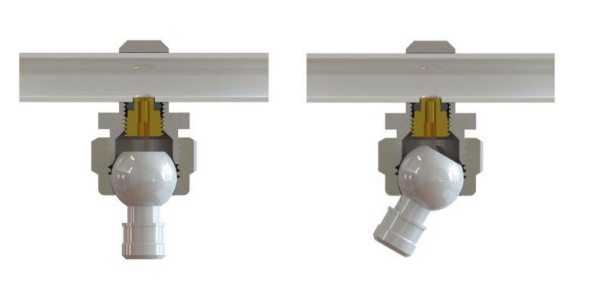

![Homepage [EN]](/media/1554/logo.svg)




































